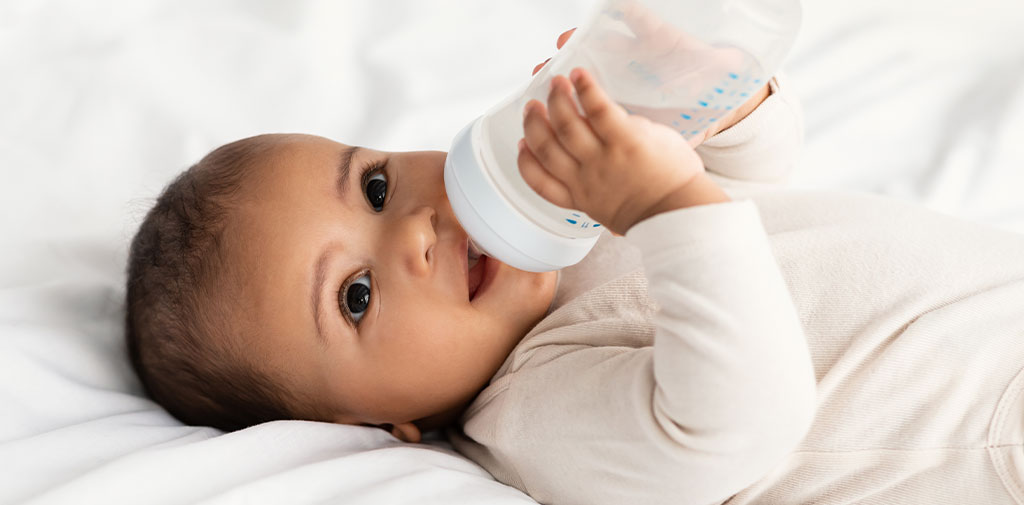Weaning is the stage when your baby grows to a level where milk alone is not enough for his growth. Babies grow at a very rapid rate, especially during their first year. Therefore, after 6 months, you can introduce solids in your baby’s diet while you continue to breastfeed him normally. Till he completes 1 year, he will need about 500 to 600ml of breast milk every day to get his daily recommended nutrients.

Is your baby ready to wean?
Please don’t pressurise yourself and your baby while introducing new foods to him. You should start the weaning process only when your baby is ready for it. How will you know that? You may have to watch out for these symptoms in your baby:
- Is he able to sit upright in his high chair with his back well-balanced?
- Can he hold his head steadily and move it from left to right?
- Is he showing excellent control while moving his hands, eyes, and mouth in a coordinated manner?
- Does he seem hungry after a milk-feed?
- Does he watch what you eat with interest and does he try to pick up foods from your plate and put them in his mouth?
- Is he able to swallow his food properly?
Please note that you have to start the weaning process only when you have answered “yes” to all or most of these questions. When your baby displays one or two of these symptoms, it is recommended that you wait for some more time before he shows more signs of balance and readiness.
Weaning foods – What to know?
Once you know that your baby is ready for weaning, you can start him on solids. In the initial stage (about 6 to 7 months), you have to give him foods that are very soft-textured and easy to digest. When introducing fruits and vegetables, you should always steam them well until they become soft and then blend them well. Mix the contents well so that you get a nice paste without any lumps. Here are some important points that you should keep in mind while weaning your baby:
- Please introduce new foods and textures only when your baby is calm and happy; when he is too hungry or restless, he may not be interested in trying the foods.
- Keep trying for at least 8 to 10 times even if your baby spits the foods that you give him on the first attempt; some babies do take some time in accepting new flavours.
- Please introduce healthy foods of all flavours and categories, as this will help your baby to grow up to be a non-fussy eater.
- When he completes 7 or 8 months, your baby will know to chew his food; this is the time you can introduce foods that have soft lumps in them. You can introduce minced meat, well-cooked eggs, fishes with soft lumps, mushrooms, aubergines and pineapples in this stage
In short, there is no rule-book to follow when you wean your baby. He will give you clues when he is ready. You can then give him the right foods in the right consistencies so that he can digest his food well.





































